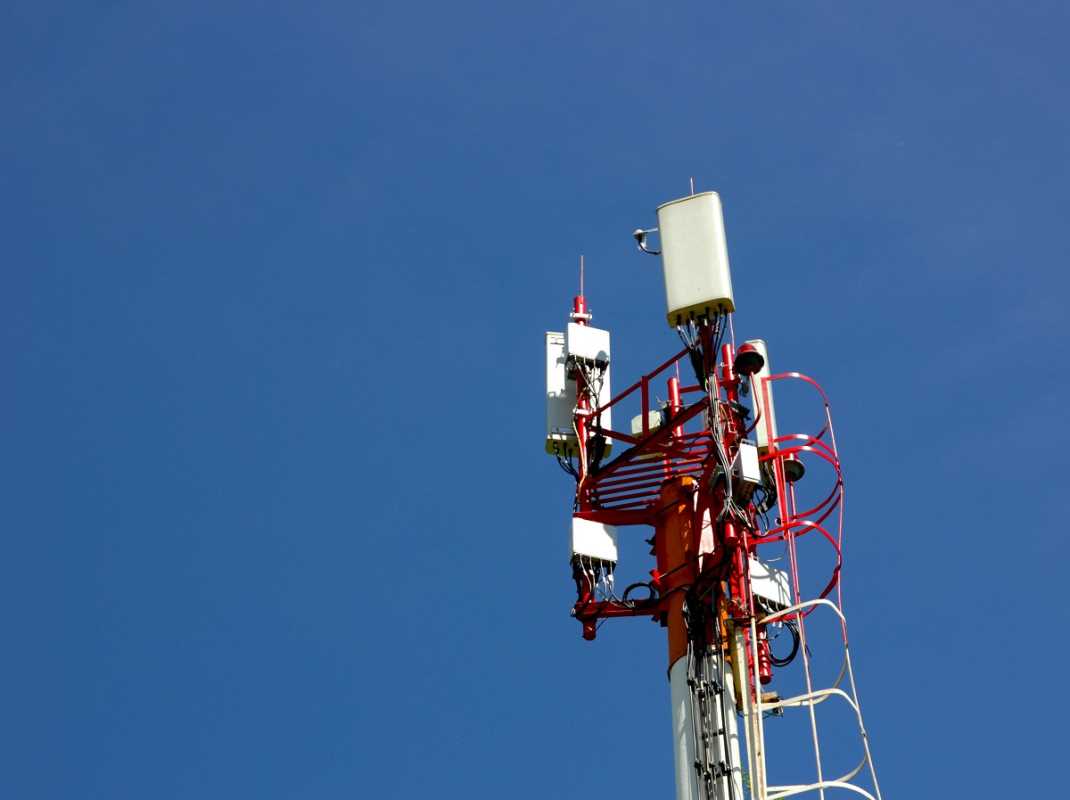5G networks are revolutionizing the way we live, offering faster speeds, lower latency, and the ability to connect more devices than ever before. It’s not just about quicker downloads or smoother streaming; 5G is paving the way for advancements in everything from smart cities to autonomous vehicles. And it’s making some huge waves in workplaces, too, enabling remote work, improving collaboration tools, and supporting technologies like augmented reality and IoT. But what does all of this really mean for you? Stick around, and we’ll break it down into easy, bite-sized pieces so you can understand how 5G is shaping the future.
What Even Is 5G?
First things first, 5G stands for “fifth generation.” It’s the latest upgrade in mobile networks, and it’s fast. We’re talking download speeds up to 100 times faster than 4G and ridiculously low latency (aka how long it takes for data to travel between two points). Translation? It’s quicker than the blink of an eye.
This speed is about more than just being able to stream your favorite shows seamlessly or upload selfies in seconds. For workplaces, it’s opening up entirely new ways of operating and collaborating that were previously unimaginable. From cloud technology to real-time data sharing, the doors 5G opens are nothing short of revolutionary.
Whether you’re tackling big projects, brainstorming with global teams, or exploring cutting-edge technologies like AI and augmented reality (AR), 5G is becoming a powerful force behind workplace transformation.
1. Remote Work, Unleashed
Remote work used to mean slow internet connections, glitchy video calls, and endless frustrations. Not anymore. Thanks to 5G, working remotely has become smoother, faster, and more reliable. With download speeds that can hit 10 gigabits per second, sending and receiving large files is no longer a time-draining task.
Gone are the days when remote workers had to deal with pixelated screens on Zoom or wait hours to sync their cloud-based files. With 5G, crystal-clear video calls and near-instant file sharing are the new norm. That means more time spent on actually getting work done and less time troubleshooting tech issues.
What’s more, 5G is making "work from anywhere" not just a buzzword but a tangible reality. Picture yourself working from a bustling café, a serene park, or even remote locations that previously had no access to high-speed internet. Reliable, lightning-fast connectivity is transforming how and where people get their work done.
For some companies, this has the added bonus of helping employees maintain a better work-life balance. Teams can stay productive no matter where they are in the world, which is especially meaningful for businesses seeking to attract top talent who value flexibility.
2. Smarter Workspaces with IoT
For workplaces, the Internet of Things (IoT) has been a rising star. Simply put, IoT refers to gadgets that can connect to the internet and communicate with one another. Think smart thermostats, security cameras, sensors, and oddly enough, coffee machines. But pairing IoT with 5G kicks things into overdrive.
5G eliminates some of the biggest limitations IoT has faced, particularly in terms of network speed and reliability. For instance, sensors can now monitor an entire workplace in real time without delays in data transfer. Here’s what that can look like in a typical office or industrial setting:
- Energy savings: Smart lights and thermostats adjust dynamically based on occupancy, saving power and reducing costs without you having to lift a finger.
- Enhanced safety: Advanced security cameras stream live HD video without any lag, providing real-time updates and detecting unusual activities instantly.
- Proactive maintenance: Machines and devices can send alerts for maintenance before a critical failure occurs, keeping operations smooth and downtime minimal.
Imagine walking into an office where everything—from the temperature to the coffee machine—is perfectly optimized before your day even begins. That’s the kind of efficiency and comfort IoT and 5G together can bring.
3. AI Gets Boosted
Artificial intelligence is heating up across industries, but AI applications need a lot of data to function effectively. 5G networks supercharge AI capabilities by drastically speeding up the processing and sharing of that data.
For example, real-time decision-making has always been a challenge for AI programs that rely on cloud computations. With the enhanced connectivity of 5G, AI-powered tools can process data and deliver results almost instantly.
Consider customer service. A chatbot driven by AI becomes much more responsive and "human" when it can instantly analyze inputs and respond in a meaningful way. Or hiring? With high-speed networks, AI recruitment tools can scan and rank hundreds of resumes in seconds, helping HR teams make better hiring decisions more efficiently.
And it doesn’t stop there. Industries such as healthcare are already tapping into AI with the help of 5G. Think robotic surgeries performed 1,000 miles away or wearable devices that offer real-time health diagnostics remotely. It’s not science fiction anymore; it’s 5G-powered reality.
4. Augmented Reality (AR) Takes Off
You might associate AR with Snapchat filters or popular games like Pokémon GO, but it’s finding its way into the workplace in some seriously cool ways. And when AR meets 5G, the impact is amplified.
For instance, companies are already using AR for training and workshops. Picture an engineer using AR goggles to see detailed, step-by-step visual guides on how to fix a faulty machine in real time. No manuals or guesswork required.
Retail and e-commerce are also undergoing massive AR-fueled transformations. Imagine shopping for furniture and being able to "place" a chair or sofa in your living room virtually through an app. With 5G, this process happens near-instantly, with precise rendering that enhances the user experience.
Another exciting space? Events and presentations. Teams can develop AR-based tools that allow clients to walk through designs or architectural models in an immersive 3D environment, making collaborations visually dynamic and engaging.
5. Simplifies Collaboration
Collaboration is at the heart of any modern workplace, and 5G is rewriting the rules for how teams work together. One of its biggest advantages is ultra-low latency. This makes lag-free collaborations across borders not only possible but seamless.
Say goodbye to pixelated brainstorm sessions or delays in accessing shared documents. With 5G, teams can work on cloud-hosted platforms where edits appear instantly, no matter where each member is based. Imagine virtual whiteboards where brainstorming is as natural as being in the same meeting room, complete with real-time voice and video integration.
Even creative collaborations like video editing and graphic design—which involve massive file sizes and real-time teamwork across specialized tools—become easier than ever. By closing the gap on digital distance, 5G offers endless opportunities for businesses to build stronger, more connected teams.
6. Drives Cloud Computing
Cloud computing is already a staple for many workplaces, and it’s only gaining momentum. With 5G, accessing and managing cloud-based applications feels almost effortless, even for industries dealing with immense amounts of data.
Take video production companies, for example. Before 5G, uploading raw footage or downloading finished projects to share with clients required tons of patience (and strong coffee). Now, big video files can be handled in mere moments, making creative workflows much more streamlined.
Healthcare and finance sectors benefit similarly. Faster uploads and downloads mean medical records, financial data, or imaging scans can be transmitted securely and swiftly across networks, enabling quicker and better decision-making. Organizations in big data fields no longer need to worry about delays or bottlenecks in their operations.
7. Better Security
Every leap forward in technology comes with new security challenges, but 5G networks don’t leave businesses behind on this front. They come packed with improved encryption protocols and better safeguards than previous generations.
5G networks also enable the real-time monitoring of IoT devices. For example, office managers can easily keep tabs on connected systems, from climate control to server status, detecting and addressing issues before they escalate into threats.
By supporting robust network slicing, 5G allows businesses to segregate different workloads into distinct "slices" of the network. This reduces vulnerabilities and ensures sensitive tasks operate on their layer of connection, minimizing the risk of breaches.
8. Opens Doors for Innovation
Innovation gets a major boost when outdated limits are lifted. 5G’s capabilities are giving companies across every industry room to dream bigger and innovate faster.
Take logistics and delivery systems as an example. Self-driving delivery vehicles and drones are becoming practical ways to lower costs and improve efficiency. They require real-time navigation and responsive controls, things that slow connections couldn’t previously support.
Manufacturing plants and factories are also adapting quickly. Imagine fully automated production lines where every machine talks to others in real time, making split-second adjustments to workflows and output.
For startups, particularly in tech-forward industries, 5G allows experimentation with cutting-edge technologies that were previously limited by network constraints. Whether it’s better telehealth apps, revolutionary e-commerce solutions, or autonomous transportation, innovators are using the "fifth generation" as a springboard for ideas once thought impossible.
Staying Ahead in a 5G World
If you’re a business professional (or just someone who loves staying ahead of tech trends), it’s critical to understand the potential of 5G. From enabling remote work to boosting innovation, 5G empowers businesses to operate faster, smarter, and more flexibly than before.
The future might just belong to those who are proactive about harnessing its power. Start exploring 5G-ready tools, upgrade your systems, and stay informed. The next workplace revolution isn’t years away—we’re living in it now.
Like 5G itself, the possibilities are fast, boundless, and closer than you think.
 (Image via
(Image via





